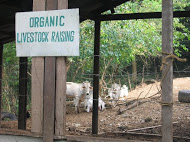
Address: Abra
Description: Threatened by a growing population, increasingly influenced by cosmopolitan culture and a cash economy, the traditional “lapat” system of natural resource management is in danger of disintegration. By reinforcing CBRM in the Buasao Watershed and Mount Poswey, however, FPE has helped re-establish the value of this ages-old beliefs and practices system.
Status: Closed
|
Ecosystem Type |
Sub-montane to Montane Forests |
|
Biogeographic Profile |
|
|
Flora |
|
|
Fauna |
|
|
Indigenous Peoples |
|
|
Livelihood Resources |
|
Poverty and scarcity of livelihood opportunities exert enormous pressure on the Maeng’s natural resources. These factors lead to overhunting of wildlife, timber poaching, and unsustainable farming techniques.
Faced with a burgeoning population, the fraying of traditional community bonds, and the influence of a cash economy, the “lapat” system is in danger of disintegration.
Few members of the community are confident enough to take up the challenge and to prove that they can conserve and protect the biodiversity of Buasao watershed for the next generations of Maeng.
The greater challenge facing the community is how to sustain the gains that have resulted from conservation and resource management interventions that took place in the previous years. Although morale is high from their modest achievements, some community members are hesitant to take the reins of project implementation.
|
Project |
Grant Type, Strategy |
Duration |
Implementing Partners |
|
Community Lapat-Based Biodiversity Conservation of Buasao Watershed and Mt. Poswey |
Medium to Large, Site-focused |
2006-2009 |
|
|
A Shift Towards Area-Specific Intervention through Strategic Planning for Six Priority Sites: Zambales, Palawan, Buasao, Guiuan, Pulangi and Bohol Marine Triangle |
Large, Site-focused, Proactive |
2006 |
|
|
Community Based Resource Management Project of Buasao Watershed and Mt. Poswey |
Large, Site-focused, Constituency-building |
1996-2005 |
|
|
Community Land-Use Planning and Mapping for Biak-na-Bato, Buasao Watershed, Baggao and Mt. Bulusan |
Medium, Constituency-building, Site-focused |
|
|
|
Environmental Legal Defense – Cordillera (Terminated)
|
Medium, Proactive, Environmental Defense |
Oct 1997-Jun 1998 |
|
|
Site Assessment and Advocacy for Buasao Watershed & Mt. Poswey |
Medium, Environmental Defense |
Apr-Sep 1995 |
|
Site resource and socio-economic profile assessments were coordinated and implemented.
About 15,000 narra and other dipterocarp seedlings were raised in three barangay nurseries within the duration of the main CBRM project. Areas have also been set aside for agro-forestry.
The CBRM project also provided about 600 rambutan and lanzones seedlings while the LGU added 300 mango seedlings.
Strengthening of the “lapat” system was apparent in key ordinances passed by the municipal government unit and the Abra Provincial Board recognizing and adopting “lapat” as an indigenous practice of resource management.
To alleviate pressure on the natural resources, the community developed alternative livelihood projects such as loom-weaving and tilapia production.
Paralegal training was also an integral component of FPE’s involvement in the area, providing an environmental defense safety net for the community members there.
Capacitated Tipon iti Umili para ti Panangsaluad iti Nakaparsuan (TIPON), into an entrepreneuring IPO.
Drafting, finalization, and adoption of the Ancestral Domain Sustainable Development and Protection Plan (ADSDPP).
Foundation for the Philippine Environment. 2004. Sustaining Biodiversity Conservation Initiatives: Site Focused Projects 2003. Quezon City, Philippines: Foundation for the Philippine Environment.